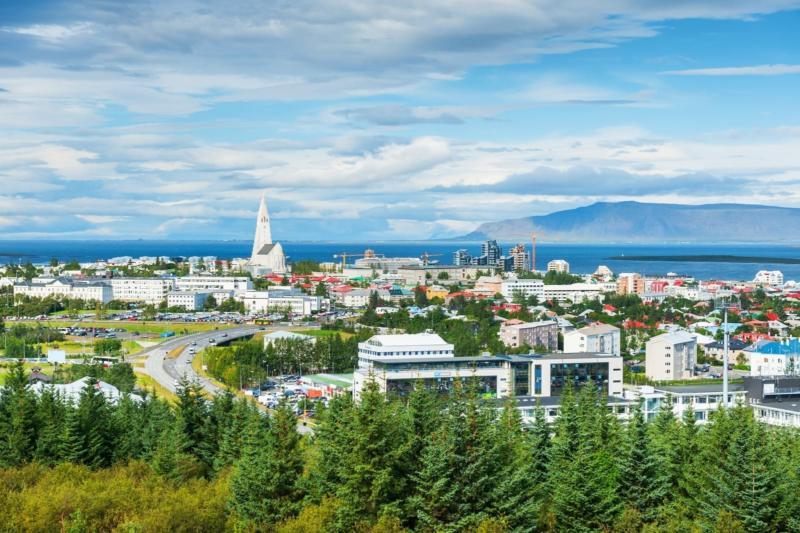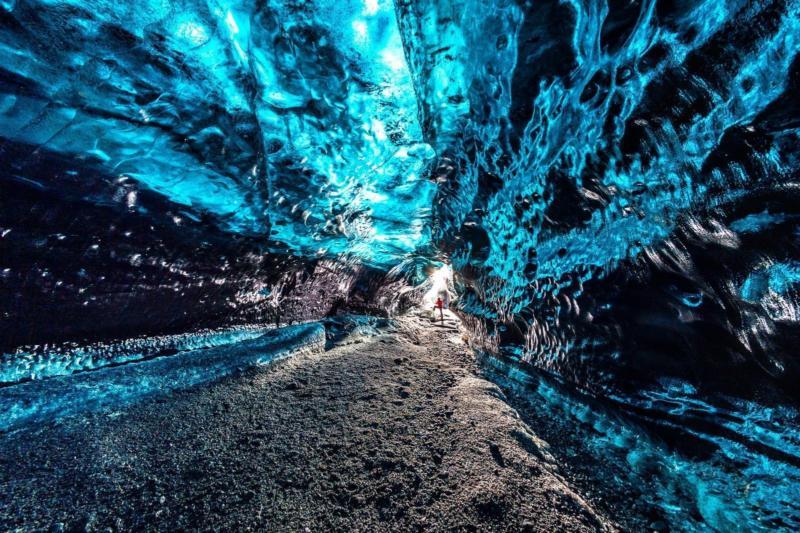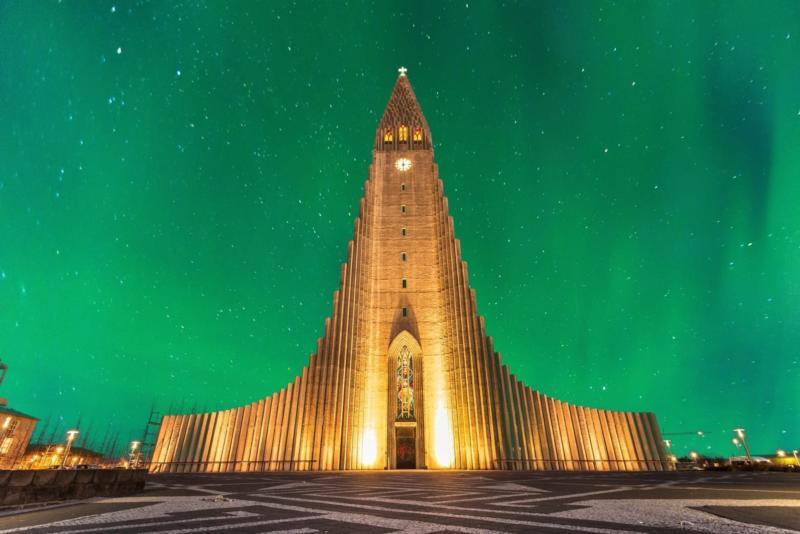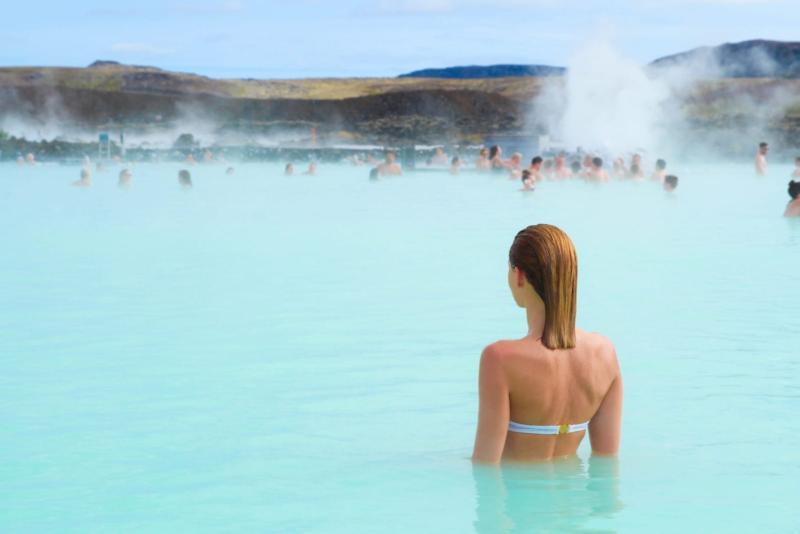A kingdom isolated, suspended in the depths of the Arctic and North Atlantic oceans, Iceland is every true adventurers paradise.
Teeming with tremendous waterfalls, perilous volcanoes, natural hot springs, black-sand beaches, ice-bound fjords and of course, the northern lights – travelling in Iceland is genuinely a once in a lifetime experience.
The island is divided into seven geographic regions, and as each differs in its landscapes, climate and culture, they remain the same in their uniquely Icelandic majesty.
If you find yourself wandering without time constraints, slow-travelling the 800 mile Ring Road is highly recommended – fly into the Reykjavik capital area and make your way through the regions taking the Western route.
However, if you are without sufficient time for this immense adventure, even a short trip to Iceland is absolutely worth it!
Basing yourself in Reykjavik, there is a plethora of day trips to be taken, ranging from the Blue Lagoon thermal baths, to the Southern Coasts beaches and the Golden Circle routes abundance of cascading waterfalls, otherworldly volcanic landscapes, and geysers.

Reykjavik, youthful and vibrant
Reykjavik, the worlds northern-most capital, is a place of many juxtapositions. Simultaneously, it carries the gentle energy of quaint small-town living and the pulsing tenacity of a cosmopolitan wonderland; even with its rich history, it is able to remain youthful and vibrant.
Being the epicentre of the Icelandic arts scene, the capital is abound in sonorous cafe culture, as well as a notorious night-life that is esteemed across the globe.
Despite its tiny population, Icelandic people have a great consideration of the visual arts, as is obviously revealed through the spirited artwork adorning walls of cafes, offices and even churches.
A short walk around Reykjavik uncovers countless riveting art galleries, such as The Culture House, the National Gallery and the Einar Jonsson Museum.
For those that travel for their love of foreign cuisines, the resonant city renders a multitude of distinctively Icelandic foods. A product of the harsh winters and isolation of an island nation, the national cuisine jumps from expected to extremely bizarre with dishes such as Black Liquorice, Fermented Shark (Hakarl), Smoked Puffin (Lundi), and even Caviar in a tube!
Finally, Reykjavik is rightly termed as the gateway to Iceland, with no shortage of natural beauty hugging in the big city, you can easily visit Nautholvsik beach, one of the only beaches on the island with sea temperatures that allow for casual swimming, The Raudholar (dreamy crater-resembling Red Hills), or the serene hot river Reykjadalur.

Exploring Iceland
The most unique and easily accessible way to travel the country is by renting a car in the capital – making all kinds of exploring available to you at your own pace. Venturing further into the nature, West Iceland is effortlessly classified as a virtually all-encompassing taste of the expansive nature and wildlife to be found throughout the island.
With glaciers, waterfalls, lava fields, caves, mountains, hot springs and thousands of little islands, this is the most geologically diverse regions in Iceland.
When you are in this territory, you must visit Glymur, Icelands tallest waterfall and Hraunfossar, a collection of waterfalls stemming from an underground freshwater river. Over here, you also have the rare possibility of exploring the inside of Langjökull glacier, and Snæfellsjökull glacier, which is an active volcano built up through countless eruptions over hundreds of thousands of years (also known as the ‘Centre of the Earth’ in the novel ‘Journey to the Centre of the Earth (1864)’, written by Jules Verne).
In the North-West edge lays the sorcerously preserved region of the Westfjords, otherwise known as Icelands best kept secret.
Due to being largely uninhabited, the nature and wildlife of the Westfjords remain unimpaired, and are therefore an oasis for the Arctic fox. These stark enclaves boast of a strong relation to their tradition and heritage, with an abundance of museums dedicated to folklore, sorcery/witchcraft and even mythical Icelandic monsters!
Reykholt is the native land of The Prose Edda, the most celebrated work of Scandinavian Literature, as well as a preponderantly in-depth source of Norse Mythology.
North of Iceland, second biggest urban
The North of Iceland is home to not only the Arctic Coast way and The Diamond Circle, but also to the country’s second biggest urban area situated in Iceland’s longest fjord, Akureyri.
This is an energetic mini-city that, similar to most of the towns surrounding it, is dedicated abundantly to marine life.
Going unconditionally off the beaten path and travelling through 900km of barren coastal routes, the Arctic Coast Way connects you to the depths of unspoiled nature through ethereal experiences.
Experience adventure by laying under the midnight sun at beaches like Svalbard, Lambnes and Skalar, or chasing the celestial Northern Lights through Skulahorn and Strákagöng, or hitch-hiking sailboats in a quest to spot whales, puffins and seals and even embracing your inner outdoorsman by riding Icelandic horses, kayaking, sea angling, hiking and snowshoeing in the winter.
No matter what time of year you visit, Iceland offers a variety of escapades for every range of traveller.

East Iceland
Being situated at the furthest distance from Reykjavik, it comes as no surprise that East Iceland is quaint in its population, and superabundant in its wildlife.
Fostering the lands largest forrest, Hallormsstadaskogur, this is the only region in which you are able to sight wild Reindeer roaming free amongst waterfalls, mountains and hot springs.
Another authentically East Icelandic allure is Viti, a crater lake formed as a result of a volcanic explosion; after hiking across the black sand dunes of Askja, the ultramarine water is suitable to swim in during the summer months.
Also throughout the summertime, East Iceland transforms into a nucleus for young artists, with a magnitude of art and music festivals emerging in recent years.
South Iceland, the motherland
Bordering the capital state, South Iceland is the motherland of the country’s most recommended natural locations.
The best way to travel this area is through the Golden Circle Route, which consists of three incomparably impressive environments: Thingvellir National Park, Geysir Geothermal Area, and Gulfoss Waterfall.
Positioned directly in-between the Euarasian and North American tectonic plates, Thingvellir National Park is a mystical place where dramatic geology is met with the roots of Iceland’s history. Silfra, a ravine situated in-between the tectonic plates is an incredibly distinctive hotspot for snorkelers and divers, with extremely rare visibility levels of 100meters, making the submarine world more accessible than ever.
Enclosed in the Haukadalur Valley is the Geysir Geothermal area, simply just driving to this unprocessed wonder, you are able to witness as the volcanic activity of the earth grows more intense.
The space is painted in the vivid colours created by a profusion of aquamarine hot pools, clay pots and fumaroles, and the soil surrounding it is bright with the minerals of our earth.
In the midst of this is Geysir, which erupts rarely, and it’s neighbour Strokkur, which blows water 40 metres into the air approximately every ten minutes.

Iceland is a nation wealthy in superlunary wilderness, rare natural phenomenas, a dense history intertwined with transcendent folklore, and unprecedented charm.
Travelling Iceland is the closest thing I have ever experienced to what I imagine it feels like to walk the landscape of another planet all-together, and I truly hope you find yourself with the chance to traverse across this crazy realm.
Leave a Reply